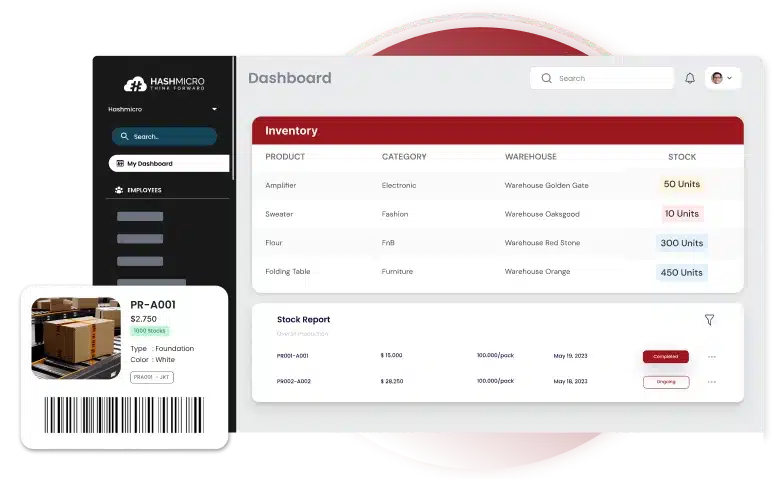A Training Management System (TMS) is a powerful tool designed to simplify and optimize the entire training process within an organization. From onboarding to compliance training and skill development, a TMS centralizes management, making it easier to coordinate sessions, track progress, and evaluate outcomes.
A study tracking digital adoption among firms found that in 2016, approximately 40% of firms had adopted at most one advanced digital tool, including TMS. This improved from nearly 50% in 2014, indicating a positive trend toward greater adoption of digital technologies.
Without a structured TMS, many companies face uncoordinated scheduling, inefficient tracking, and a lack of visibility into training effectiveness, which hinders employee growth and organizational success.
In this article, we’ll dive into the fundamentals of a Training Management System, explore the everyday challenges it addresses, and outline how it can be the solution for effective workforce development.
Key Takeaways
|
What is a Training Management System?
A Training Management System (TMS) is software that centralizes and automates the management of employee training programs. It streamlines course management, scheduling, and performance tracking, enhancing training efficiency and supporting workforce development.
Providing an organized framework simplifies complex processes and ensures that training is consistent, scalable, and aligned with business goals.
TMS supports various training activities, including new employee orientation, compliance training, skills development, and certification programs. These systems typically include features to manage course creation and reporting, allowing training managers to oversee every phase of an employee’s training journey.
By automating these processes, a TMS reduces administrative burden and enhances the training experience by making materials and schedules accessible and transparent to employees.
The value of a Training Management System lies in its ability to help organizations stay agile and competitive by fostering a skilled workforce. Employees have greater access to essential resources, and managers have data-driven insights to assess the effectiveness of their programs.
Key Features of TMS
Training Management Systems (TMS) are equipped with various key features that enhance the effectiveness and efficiency of training programs. Here are some of the most essential features of a TMS:
1. Course management
A robust TMS allows organizations to create, manage, and deliver various training courses. Users can easily design course content, set prerequisites, and update materials as needed, ensuring employees can access the most relevant and up-to-date information.
2. Scheduling and enrollment
A TMS simplifies enrolling employees in training sessions with an intuitive scheduling system. Users can set up training calendars, send automated reminders, and track attendance, ensuring that training sessions are well-attended and efficiently organized.
3. Progress tracking and reporting
A vital feature of a TMS is the ability to monitor and assess employee progress throughout their training journey. Managers can generate reports highlighting completion rates, performance metrics, and areas for improvement, allowing for data-driven decision-making.
4. Learning pathways
TMS platforms often include personalized learning pathways that guide employees through training modules based on their roles, skills, and career goals. This tailored approach ensures that employees receive training relevant to their needs and career development.
5. Integration capabilities
A TMS often integrates seamlessly with other HR and business systems, such as Human Resource Information Systems (HRIS) and performance management tools. This integration allows for a more holistic approach to employee development, ensuring that training data informs broader talent management strategies.
6. Mobile Accessibility
In today’s digital age, mobile accessibility is crucial. Many TMS platforms offer mobile-friendly interfaces or dedicated apps, allowing employees to access training materials and complete courses on the go, enhancing flexibility and engagement.
Businesses can leverage these capabilities to ensure effective employee development, enhance compliance, and drive overall performance. Investing in a TMS is a strategic move toward fostering a continuous learning and improvement culture.
Who Needs a Training Management System?
A Training Management System (TMS) benefits many organizations and industries that prioritize structured, efficient, and impactful employee training. Here’s a look at who stands to gain the most from a TMS:
1. Corporations and large enterprises
Large companies with numerous departments and global teams often face logistical challenges in training management. A TMS centralizes training processes, making it easier for HR and training departments to coordinate and track employee progress across different locations.
2. Organizations in regulated industries
Industries like healthcare, finance, manufacturing, and transportation are highly regulated and require ongoing compliance training to meet legal standards. A TMS helps organizations in these sectors ensure that all employees receive necessary certifications and comply with regulations.
4. HR and L&D Departments
Human Resources (HR) and Learning and Development (L&D) teams are responsible for workforce development and retention. A TMS gives these departments the tools to provide structured training programs, track skills development, and create employee learning pathways.
5. Small and mid-sized businesses with growth plans
For smaller organizations looking to scale, a TMS offers an efficient way to implement training programs without hiring a large training team. As these businesses expand, a TMS provides the flexibility to grow and adapt to their evolving needs.
TMS can benefit any organization aiming to enhance its training effectiveness, improve compliance, and streamline employee development. Whether a large enterprise, a regulated industry, or a growing business, a TMS can empower organizations to build a well-trained, engaged, and future-ready workforce.
Why is a Training Management System Important?

A Training Management System (TMS) is essential for organizations delivering efficient, impactful, and scalable training. Continuous employee development becomes vital as technology, regulations, and competitive pressures rapidly evolve.
With automation handling administrative tasks like enrollment and progress monitoring, managers can focus more on program quality and employee engagement, leading to faster, more productive training cycles.
Compliance is another critical area where a TMS adds value. Maintaining up-to-date training records is essential for industries with stringent regulatory requirements to minimize legal and financial risks.
A TMS keeps accurate documentation of completed training and certifications, making it easier to prove compliance during audits. Automated reminders and tracking ensure employees complete mandatory training on time, which helps reduce the risk of non-compliance.
Additionally, a TMS boosts employee engagement by offering diverse, personalized learning experiences and on-demand resource access. This fosters a culture of continuous learning, which can lead to higher job satisfaction and improved retention rates.
Comparing TMS, LMS, CRM, and Event Management
Here is a table highlighting the key differences between Training Management System (TMS), Learning Management System (LMS), Customer Relationship Management (CRM), and Event Management software.
Each system has distinct purposes and functionalities, even though they may appear similar in the context of management and organization.
| Aspect | TMS (Training
Management System) |
LMS (Learning
Management System) |
CRM (Customer
Relationship Management) |
Event
Management |
| Purpose | Manages employee training
logistics |
Delivers and tracks online
learning |
Manages customer
relationships |
Organizes and
manages events |
| Focus | Training administration &
compliance |
Learning content &
learner progress |
Sales, support, & customer
data |
Event planning &
execution |
| User Base | HR & L&D departments | Learners, trainers,
educators |
Sales, marketing, &
customer service |
Event coordinators,
planners |
| Content Type | Training sessions &
certifications |
Online courses &
assessments |
Customer interactions &
histories |
Event schedules &
registration |
| Automation
Features |
Scheduling, attendance
tracking |
Course completion
tracking |
Lead scoring, follow-up
reminders |
Registration,
ticketing, reminders |
Understanding these differences allows organizations to select the system that best meets their needs, whether for managing training, learning management system, customer relationships, or event organization.
Read more: The 4 Best Event Management Software in Singapore 2025
Seamlessly Manage Employee Development with HashMicro’s TMS

Efficiently managing employee development is key to building a skilled, engaged, and productive workforce, and HashMicro’s Training Management System (TMS) offers the tools to make this process seamless.
Designed to simplify every aspect of employee training, HashMicro’s TMS allows organizations to streamline course scheduling, automate tracking, and centralize learning materials all in one place.
This all-in-one solution provides real-time access to training records, employee progress, and certification statuses, empowering HR teams and managers to support development goals easily. Here are some of the key features:
- Generate Certificate Automatically: Certificates are automatically generated upon course completion, streamlining the certification process and ensuring timely employee documentation.
- Online Registration: This feature enables easy online course registration, simplifies sign-ups, and reduces administrative workload with a user-friendly, accessible interface.
- Course Management: Organizes all training courses in one place, allowing managers to create, schedule, and update courses efficiently for streamlined training programs.
- Automated Attendance System: Tracks and records attendance automatically, ensuring accurate data and reducing manual tracking efforts for training sessions.
- Comprehensive Report: Provides detailed reports on employee training progress, completion rates, and overall training effectiveness, offering insights for continual improvement.
With these features, HashMicro’s TMS empowers companies to manage employee training more effectively and efficiently, supporting continuous development goals while ensuring compliance is easily achieved.
Conclusions
A Training Management System (TMS) is essential for organizing, tracking, and managing employee development and training activities.
A TMS improves efficiency by centralizing all training processes. It also ensures that companies meet compliance requirements, enhance employee skills, and drive organizational growth.
HashMicro TMS is a powerful solution that offers automation, centralized data management, and insightful reporting to simplify training logistics and improve training outcomes. With their critical features, HashMicro’s TMS enables organizations to provide a seamless training experience while meeting their development goals.
Ready to transform your training management? Discover how HashMicro’s TMS can help your organization achieve continuous employee growth and compliance. Contact us today to learn more or schedule a free demo.
Warning: Undefined array key "med" in /home/hashmicr/public_html/blog/wp-content/plugins/insert-headers-and-footers/includes/class-wpcode-snippet-execute.php(419) : eval()'d code on line 281

FAQ About Training Management System
-
What is the training management system?
A training management system (TMS) is software designed to plan, organize, and track all aspects of training programs within an organization. It streamlines scheduling, resource allocation, tracking employee progress, and generating reports to enhance training effectiveness and simplify administrative tasks.
-
What is TMS vs. LMS?
A TMS (Training Management System) focuses on the administration and logistics of training programs, such as scheduling and managing resources. In contrast, an LMS (Learning Management System) primarily manages content delivery and tracking learner progress. TMS supports the operational side of training, while LMS supports the educational experience for users.
-
What is the training management process?
The training management process involves identifying training needs, planning and scheduling courses, allocating resources, tracking progress, and evaluating results. This structured approach ensures that training aligns with organizational goals, enhances employee skills, and measures the success of training initiatives.












